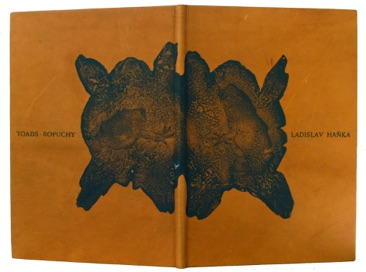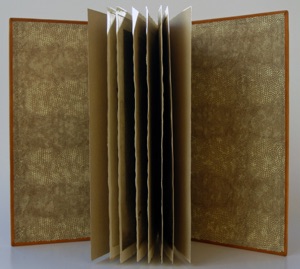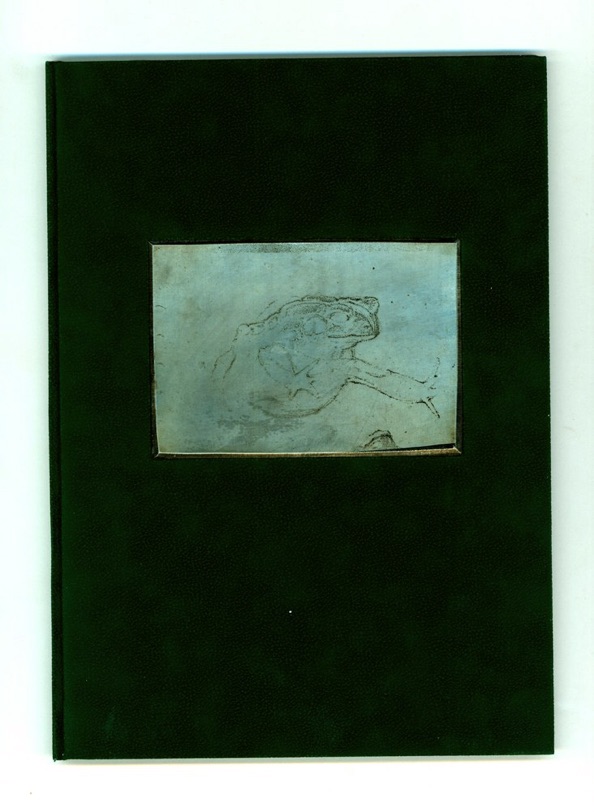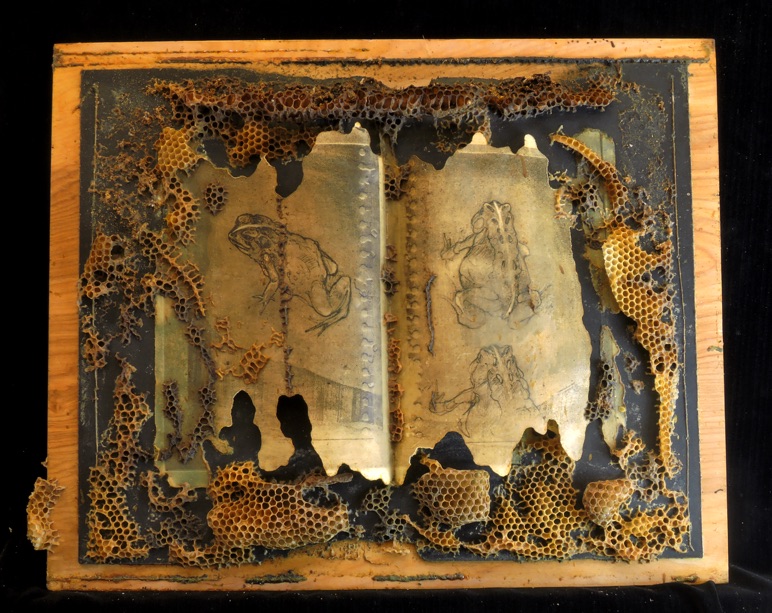Toads

Toads
Each double page of toads on hand-made paper
in A3 format ( 8 x 1.5”).............................each 250.00
Complete Toad folio with intaglio-printed
text page bound with slipcase ........................ 1,500.00
Complete Toad folio with intaglio-printed text page
loose in leather-bound Presentation folder ......1,200.00
Toads
Amphibians are to the world today as the caged canary was once to the coal miner. They depend upon healthy surface waters; they are dying and we should be concerned. Amphibians are however less obvious in their disappearance than is the canary, who suddenly quiets down and falls from its perch. Marshes still seem alive with frog-song when half or even 90% of the frogs are absent. Toads are mostly under ground and out of sight, so we notice their absence even less. As a naturalist, I hadn’t noticed the paucity of toads until I needed some specimens to draw and had difficulty finding any. They had become so uncommon, even in good habitat that the once ubiquitous hog-nosed snakes that feed on them had died out. Hog-nosed snakes – that’s right! We all used to play with them as kids - called them puff adders and enjoyed seeing them inflate cobra-like and make threatening hissing noises - and then roll over and play dead. But when have you last actually seen a live one? A decade ago - maybe more? The most foreboding omen at the turn of the millennium was not the faulty computer code Y2K, which merely cost industry some money, but the deformed amphibians appearing throughout northern latitudes: green frogs trying to jump with twisted or missing limbs; the grotesque disjointed swimming movements of pickerel frogs with extra legs protruding from unlikely places.
Toads were clearly in trouble and I needed to involve myself in their fate. Drawing toads become part of my discipline- a sort of graphic ghost dance; evoking the spirit of the troubled beings, whose fate I may well share. I kept a few in a terrarium and drew toad upon toad - compulsively. Toads, in all positions multiplied in my sketchbooks. The drawings became increasingly composed and proficiently drawn. Eventually I scanned several into a computer and made half-tone transparencies, which I then tried etching through photo-emulsions into copper plates. Seeing the images enter a new medium interested me – the perforations of pages torn from a sketchbook left intact and printed in viscous sepia-toned etching inks with a nice plate tone. The polymer doesn’t always adhere well and thus the process and its short-comings is itself recorded in the plates as they evolve. The simple pencil drawings were being enriched with the tonality, accidental marks and drypointing of the intaglio medium they were entering. The technical process had thus become a reflexive exercise by which sketchbooks and finished prints merged into curiously protean hybrids, employing the oldest and newest of technologies to arrive at expressions that are not otherwise, in any obvious way, of their time.
Endpapers are an etching made to evoke the appearance of toad skins. Skin of the toad is a lithographer’s expression for a nicely executed tusche wash. Put down freshly without becoming muddied from overwork, the wash will set up in beautifully agglutinated organic patterns reminiscent of toad skin. No attempt has been made at an organized and numbered edition – a few Artist’s proofs will have to do. The paper is rare indeed and couched by the now-deceased Zdeněk Král in the shadow of the ancient Moravian monastery at Tišnov, in the Czech Republic.
Ladislav R. Hanka in Kalamazoo


Toads - unique design binding by Jan Sobota
Binding by Radek Sobota


Binding by Jan Sobota with inset etching plate by Ladislav Hanka

And of course we must conclude with that eternally mysterious incunabulum
bequeathed to us by unknown monks so long ago -
LIBRA GIGA BUFA The Great Book of Toads
